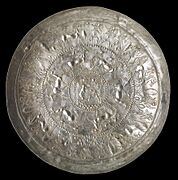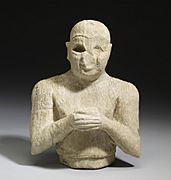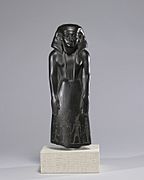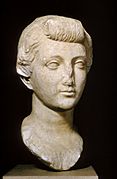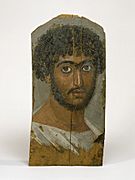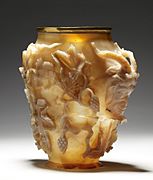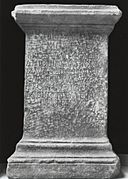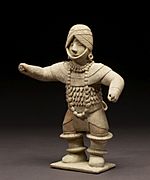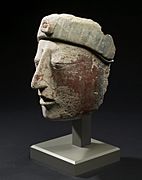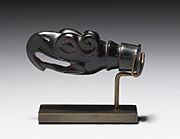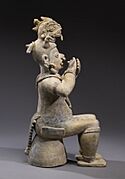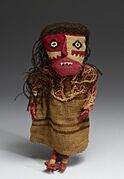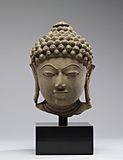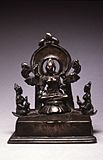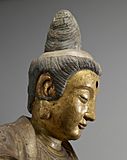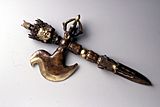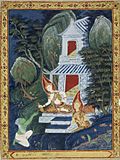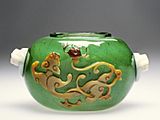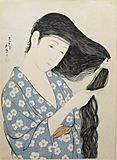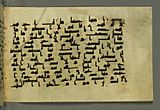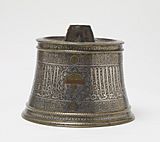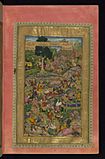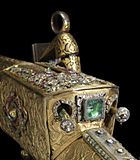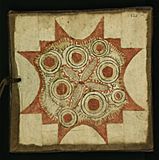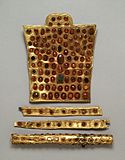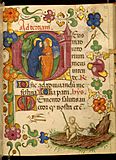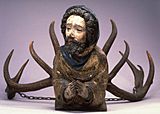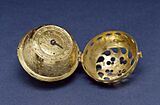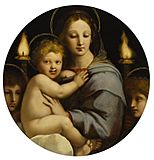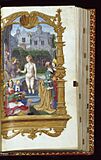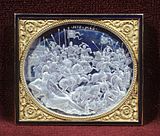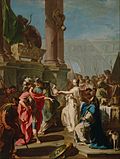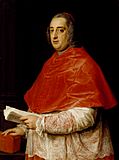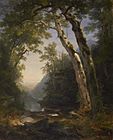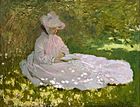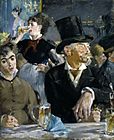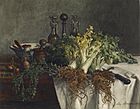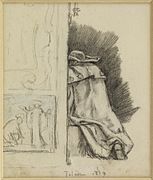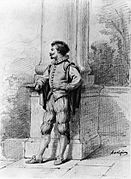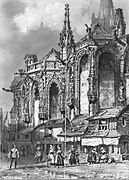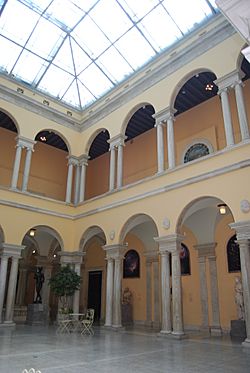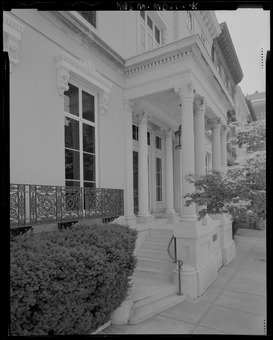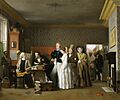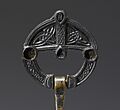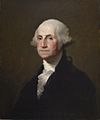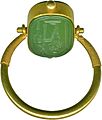Walters Art Museum facts for kids
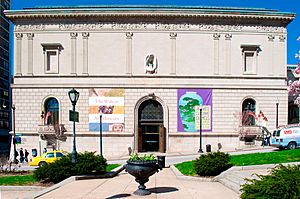
Museum entrance, North Charles Street, Baltimore
|
|
| Former name | The Walters Art Gallery |
|---|---|
| Established | 1934 |
| Location | Mount Vernon, Baltimore, Maryland, U.S. |
| Type | Art museum |
| Public transit access | BaltimoreLink routes Green, Pink, Silver, 51, 95, 103, 410, 411 Charm City Circulator Purple Route |
The Walters Art Museum is a super cool place to explore art in Baltimore, Maryland. It's a public art museum that opened in 1934. The museum holds amazing collections of art and sculptures. These were gathered by two important American art collectors, William Thompson Walters and his son Henry Walters. William started collecting art in 1861. Henry then added to the collection and helped build the museum we see today.
The best part? It's completely free to visit!
Contents
Discovering the Walters Art Museum
The Walters Art Museum is a treasure chest of art from all over the world. It has pieces from ancient times to the 20th century. You can see art from ancient Egypt, Greece, and Rome. There are also beautiful medieval items and Renaissance sculptures. The museum even has art from China, Japan, and the Middle East.
A Look at the Museum's History
Henry Walters let people see his family's growing art collection in his mansion in the late 1800s. He then decided to build a special building just for the art. This grand stone building, designed like an Italian palazzo, was finished in 1909. It was located near the famous Washington Monument.
When Henry Walters passed away in 1931, he gave his entire collection to the City of Baltimore. This included over 22,000 artworks, the gallery building, and his mansion. He wanted the art to be "for the benefit of the public."
In 2000, the museum changed its name from "The Walters Art Gallery" to "The Walters Art Museum." This new name showed that it was a big public museum. A year later, the main building reopened after a big renovation.
Since October 1, 2006, the museum has offered free admission all year round. This was made possible by generous grants from Baltimore City. In 2012, the Walters did something amazing. They shared nearly 20,000 images of their art collection online for free. This was one of the biggest art-sharing projects by any museum!
Exploring the Permanent Collection
The Walters Art Museum has a huge collection of art. It covers many different times and places. Let's explore some of the highlights!
Ancient Art: From Egypt to Rome
The museum's ancient art collection is incredible. It includes pieces from Egypt, Nubia, Greece, Rome, and the Near East. Imagine seeing two giant 3,000-pound statues of the Egyptian lion-headed goddess Sekhmet! You can also see the Walters Mummy and beautiful Greek gold jewelry. There are also many Roman portrait heads and marble coffins.
-
Al Fayum mummy portrait, Roman Egypt, c. A.D. 175
-
The Rubens Vase, an agate hardstone carving of c. A.D. 400
Art from the Ancient Americas
In 1911, Henry Walters bought nearly 100 gold items from Panama. This started the museum's collection of ancient American art. The museum now has pottery and stone works from Mexico, Central America, and South America. You can see pieces from the Olmec, Aztec, and Maya cultures. There are also items from the Moche and Inca peoples.
-
Whistle from Colima, Mexico, c. 300 B.C. - A.D. 200
-
Jama Coaque figure, from Manabí Province, Ecuador, c. 300 BCE-800 CE
Asian Art: From Japan to Thailand
The Asian art collection is another highlight. It includes Japanese armor and Chinese and Japanese porcelains. You can also see beautiful lacquers and metalwork. One special piece is a Cambodian bronze of the eight-armed Avalokiteshvara. The museum also has the oldest surviving Chinese wood-and-lacquer image of the Buddha. It even has one of the largest collections of Thai art outside of Thailand!
-
Head of a Jain Tirthankara, India, 10th century
-
'Mandala of Padmavati' - bronze statue of Goddess Padmavati, India, 11th century
-
Brass idol of tirthankar Parshvanatha, India, 16th century
-
Detail of Ming dynasty wood and lacquer Guanyin
-
15th-century Tibet, a ritual knife and chopper
-
19th-century Thai illustration of Vessantara Jataka, Ch 10
-
18th-century Chinese jar with dragon
-
Hashiguchi Goyo, Woman in Blue Combing Her Hair, woodblock print, Japan, 1920
Islamic Art: Beauty from Across Cultures
The Walters also has a wonderful collection of Islamic art. You can see a silver bowl from 7th-century Iran. There's also a 13th-century candlestick from Egypt made of copper, silver, and gold. Look for 16th-century doors with amazing wood carvings. A 17th-century silk sash from India and a Turkish tile showing the Masjid al-Haram in Mecca are also on display.
The museum also has many Islamic manuscripts. These include a 15th-century Koran from India. There's also a 16th-century copy of the "Khamsa of Nizami" with illustrations by famous artists.
-
Early Qur'an page in Kufic script, 9th century
-
The Death of Darius, Mughal miniature from Akbar's Khamsa of Nizami, 1595
-
Detail of an 18th-century ceremonial jeweled Turkish rifle
Medieval European Art: Knights and Manuscripts
The Walters is famous around the world for its medieval art collection. It's one of the best in the United States! You can find metalwork, sculptures, and stained glass. There are also textiles, icons, and paintings. The museum is especially known for its ivories and illuminated manuscripts. It also has the largest collection of Ethiopian Orthodox Church art outside of Ethiopia.
Some unique items include the Byzantine agate Rubens Vase. This vase once belonged to the famous painter Rubens. There's also an ivory carving from Egypt, the earliest image of the "Virgin of Tenderness." You can even see sculpted heads from the royal Abbey of St. Denis in France. These are rare examples of early Gothic art.
-
Hunnish set of horse trappings, 4th century
-
Leaf from Barbavara Book of Hours, Milan c. 1440
-
15th century Nottingham alabaster panel of the Resurrection of Christ
-
German chandelier, red deer antler and wood, 15th century
Renaissance and Baroque Art: European Masterpieces
This collection features European art from the Renaissance and Baroque periods. You can see paintings, sculptures, and furniture. Highlights include Saint Francis Receiving the Stigmata by El Greco. There's also The Ideal City, a famous painting attributed to Fra Carnevale. The museum also has a rare Sèvres pot-pourri vase in the shape of a ship.
-
Pomander Watch of 1530, once belonged to Philip Melanchthon
-
Madonna of the Candelabra (c. 1513) by Raphael.
-
The Battle of Pavia, engraved on rock crystal, 1530s
-
Giovanni Battista Tiepolo, Scipio Africanus Freeing Massiva, c. 1720
-
The Sacrifice of Polyxena, Giambattista Pittoni
-
Pompeo Batoni, Portrait of Cardinal Prospero Colonna di Sciarra, c. 1750
19th-Century European Art: Impressionists and More
William and Henry Walters also collected art from the late 19th century. This includes works by French academic artists and Impressionists. You can see Odalisque with Slave by Ingres. There's also Claude Monet's Springtime and Édouard Manet's The Café Concert.
Henry Walters loved the fancy arts of 18th-century France. The museum has beautiful Sèvres porcelain pieces. These were made for the Royal Court at Versailles Palace. You can also find amazing jewelry by René Lalique and Fabergé. This includes two Russian Imperial Easter eggs! There are also precious jewels by Tiffany and Co.
-
Raby Castle (1817) by Joseph Mallord William Turner
-
The Catskills (1859) by Asher Brown Durand.
-
News from Afar (1860) by Alfred Stevens
-
Springtime (1872) by Claude Monet.
-
The Café-Concert (ca. 1879) by Édouard Manet.
-
The Terrace at Saint-Germain, Spring (1875) by Alfred Sisley.
Drawings Collection
The museum also has a collection of interesting drawings. These show different styles and subjects.
-
Confessional, Toledo, by Félicien Rops, 1889
Museum Buildings
The Walters Art Museum is made up of several interesting buildings. Each one has its own unique history and style.
The Original Main Building (1905–1909)
Henry Walters' first gallery was designed by architect William Adams Delano. It was built between 1904 and 1909. The outside looks like a fancy French building called the Hôtel Pourtalès in Paris. The inside was inspired by a 17th-century building in Genoa, Italy. Today, this building shows art from the Renaissance and Baroque periods. It also has French decorative arts and rare books.
The Centre Street Annex Building (1974)
This modern building was added in 1974. It has a unique "Brutalist" style with poured concrete. In 1998–2001, it was updated with a cool four-story glass entrance. This new lobby makes it easier for everyone to enter. It also has a café, gift shop, and a library. This building houses the ancient, medieval, and 19th-century European collections. It's also home to the museum's famous art conservation laboratory.
Hackerman House (1850/1991)
This beautiful Greek Revival mansion was built between 1848 and 1850. It was once owned by important families like the Thomas, Jencks, and Gladding families. Famous guests like the future King Edward VII of England once visited this house!
In the 1980s, the mansion was given to the Walters Art Museum. It was renamed "Hackerman House" after a generous donation. After some renovations, it reopened in 1991. Today, Hackerman House is dedicated to the museum's amazing collection of Asian art.
Images for kids
-
Ethiopian miniature of John the Evangelist, Gunda Gunde Gospel Book, c. 1540
-
George Washington (1825) by Gilbert Stuart
-
The Church at Eragny (1884) by Camille Pissarro
-
Margot in Blue (1902) by Mary Cassatt.
-
Rose Trellis Imperial Easter Egg (1907) by Peter Carl Fabergé.
-
Moveable ring from 664 to 322 BC. Green jasper and gold.
-
Pendant with a Lion, Flemish, (between 1600 and 1650) Baroque
-
Iris Corsage Ornament (c. 1900) by Tiffany & Company.
See also
 In Spanish: Walters Art Museum para niños
In Spanish: Walters Art Museum para niños
- Baltimore Museum of Art
- William Henry Rinehart
- Peabody Institute
- George Peabody Library
- Charles Street
- Washington Monument


